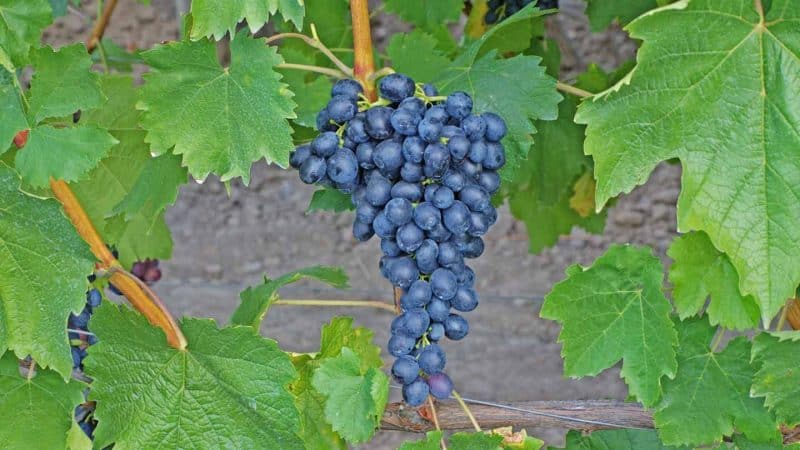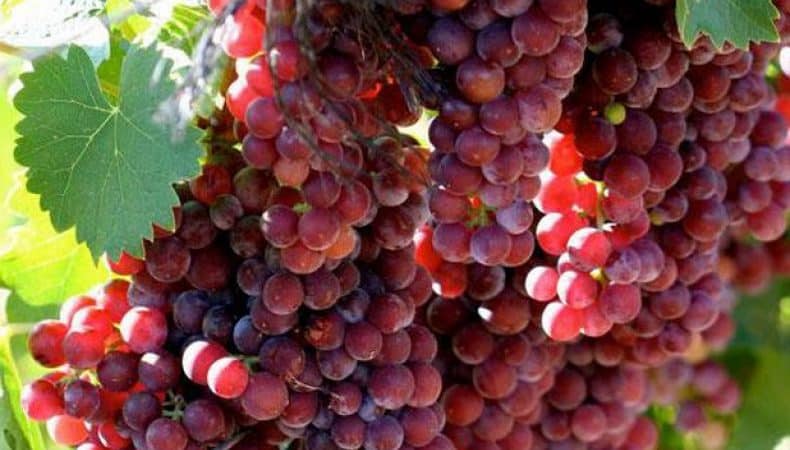Reliable ways to determine the grape variety yourself
There are hundreds of grape varieties: technical and table, early and late, pink and white. In Russia, grapes of domestic, American, Dutch, Georgian, and Spanish selection are grown. If there are more than three different varieties on one site, gardeners risk getting confused among them, especially if the plants are similar. The article will tell you what signs to look for and how to distinguish grape varieties.
How to determine grape variety
Many grape varieties are very similar to each other: they have the same leaf color, shape and size of the bunches. To distinguish one variety from another, winegrowers pay attention to basic characteristics.
By appearance

There are four-, five-lobed and whole leaves. The latter type is most often found in hybrids, for example in the popular American grapes - Seneca, Valiant, Lucille. The edges of such leaves are jagged, the plates are round. The larger the leaves, the older the bush.
The surface of the sheet can be smooth or rough, glossy or matte. Some varieties have slightly dissected leaves, others have strongly dissected leaves. The shape is round, ovoid, heart-shaped, wedge-shaped. In summer the color is light green, dark green or light green, in autumn it is red, brown, orange or yellow.
When determining a variety, pay attention to the berries. The basis is the color of the peel, its thickness, the presence of a waxy coating, the size of the whole bunch and one fruit. The structure can be dense or loose.For example, the grapes Aleshenkin, Hercules and Gurman Krainova have large and loose clusters, while Cocktail and Neptune have conical clusters, with a maximum weight of only 300 g.
Read also:
Popular delicious grape variety "Aligote"
Taste

The variety is determined by the taste of the berries and their aroma. The taste can be sweet, sweet-sour, sour or neutral. The aroma is nutmeg, neutral, floral, strawberry, fruity.
Interesting! Industrial grapes are used for making juice and wine, table grapes are used for fresh consumption and sale, and long-term storage. Characteristic features of the table fruit are large conical clusters, large egg-shaped fruits, dense peel and juicy crispy pulp, sweet taste. Technical varieties do not have such attractive characteristics: their clusters and berries are small, the skin is thin, and the taste is tart.
If there are no seeds in the berries, then it is raisins. The remaining varieties have 2-3 small seeds. It is recommended to pay attention to the color of the juice, which can be colorless or slightly pinkish.
By flowers

The plant's flowers are bisexual or functionally female. The shape of the ovary is conical, cylindrical, spherical. The length of the stamens and pistils is different for all plants. Experienced winegrowers say that it is impossible to determine the variety by the appearance of the flower. Another thing is to catch the moment of flowering and find out what period of ripening the grapes belong to: early, middle, late.
Other methods
Not only external and taste characteristics help to distinguish one grape from another. Experts take into account the moment of bud break, the beginning of flowering and ripening, and fruiting.Early varieties bear fruit by mid-July, mid-season varieties in August, late varieties in September and October. The time of fruit set and leaf fall is taken into account.
In addition, pay attention to:
- on the degree of ripening of the vine - determined by color, expressed by the number of ripened internodes and as a percentage of the total length of the shoots;
- height of the plant and vine - grapes can be low-growing (up to 1.5 m), medium-growing (up to 2 m), tall (2.5 m and above), the vines are straight or curved, green or brown, bare or pubescent;
- grape resistance to frost and drought;
- immunity to diseases and insect pests;
- features of agricultural technology: number of waterings, length and frequency of pruning, formation, requirements for fertilizing.
Which method is the most reliable?
In the first place in terms of reliability is identification of the species by the bunch: color, weight, shape, density. It is recommended to carefully study these characteristics and compare them with photographs from the Internet. It is advisable to refer to the State Register of the Russian Federation, where there is a description of all grape varieties approved for use.
Interesting! If the grapes have curved and climbing vines and smooth leaves, then most likely this is an ornamental variety. They are used for landscaping, the height of the plant is 2-3 m. These varieties are unpretentious in care, resistant to frost, diseases and pests. Their clusters are small and dense, the leaves are rich green.
Traits such as yield, frost resistance, taste and aroma are assessed last.
Read also:
Hybrid grape Kesha - description and characteristics
Conclusion
They recognize a grape variety by its leaves, berries, and clusters. Some plants have dark green, small and pubescent leaves, while others have large, glossy light green leaves. The larger the leaf, the older the plant. The berries are white, pink, dark, the shape is round or ovoid, the peel is thin or dense. The taste of table varieties is sweet, with a pleasant aroma, while technical varieties are sweet and sour, with a tart aftertaste and nutmeg aroma. Brushes can be winged or semi-winged, conical or cylindrical.